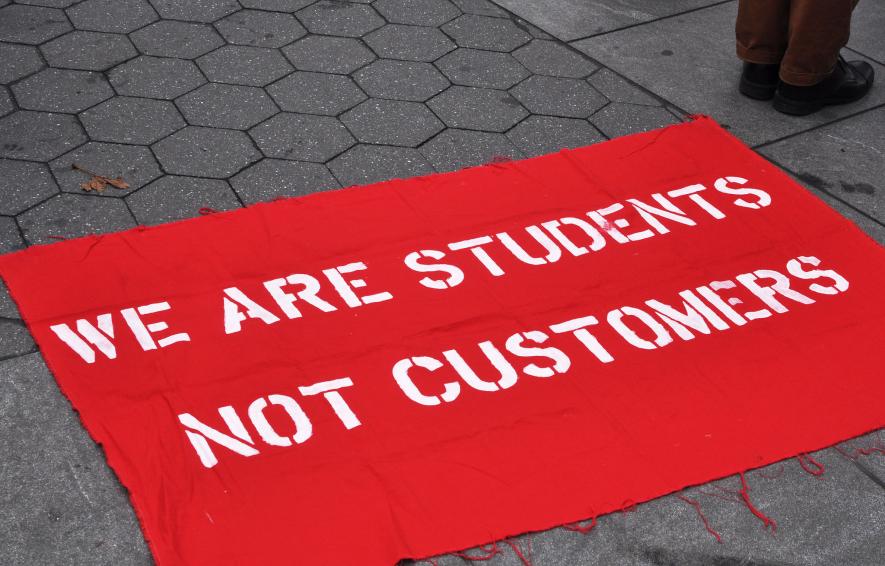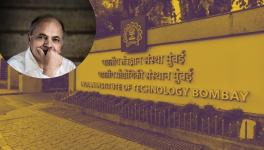What Does Indian Students’ Spending in the US Reveal About India’s Policies on Education?

A very interesting snippet of information which exposes the state of India's higher education came to light recently – the money spent by Indian students in the US is higher than the entire higher education budget of the central government in India!
According to a report in The Financial Express, Indian students spent $6.54 billion (about Rs 43,859 crore) in 2016-17 in the US. On the other hand, the Indian government's budget outlay for higher education in 2016-17 was 52% less than this figure – Rs. 28,840 crore!
What is more, the money spent by Indian students in the US turns out to be higher than the US's foreign direct investment (FDI) in India – which was just $2.37 billion.
The budgetary allocation for the University Grants Commission (UGC) was just Rs. 4491.94 crore in the year 2016-17, and that of the National Education Mission (Rashtriya Ucchatar Shiksha Abhiyan – RUSA) was Rs. 1300 crore.
The central universities in India – such as Jawaharlal Nehru University, University of Hyderabad, Delhi University and 44 other universities taken together – were given a grant of Rs. 6355.93 crore.
The Indian Institute of Science (IISc) and the Indian Institutes of Science, Education & Research (IISERs) were allotted Rs. 1142.52 crore. The Indian Institutes of Technology (IITs) were given Rs. 4948.71 crore, the Indian Institutes of Management (IIMs), Rs. 730 crore and the National Institutes of Technology (NITs), Rs. 2629.95 crore.
These are all meagre numbers by international standards – the Harvard University in the US alone had a budget of $4.9 billion (Rs. 32,757 crore) in the 2017 fiscal year. Of course, the Indian institutions mentioned above are the better-funded higher educational institutions in the country. The condition of the vast majority of state universities are worse by a wide margin.
Nobody today would disagree with the assertion that the quality of education in India can be increased only by devoting much more resources for the purpose.
The claims that public educational institutions in India are bad often ignore the fact that in general, public higher educational institutions are better in quality than private ones. As Professor Jayati Ghosh points out, “All the so-called “institutions of excellence” in higher education are publicly created and publicly funded.” The case of school education is also similar, with a small number of public schools – Kendriya Vidyalayas and Navodaya Vidyalayas, etc – running relatively well, while most others being confined to the margins. A small number of “prestigious” institutions (schools, colleges, universities) co-exist with a large number of those with poorer quality. The key difference is, funding. Ensuring adequate infrastructure, employing the requisite number of well-trained teachers, paying them decent salaries, all require resources.
And going by the spending of Indian students in the US, clearly there is enough money in India to be spent on education.
Considering the fact that the central government expenditure on education (Rs. 72,394 crore for 2016-17) was just 0.47% of the GDP, it is certainly not an extravagant demand that the central government must invest much more on public education.
The spending on education has, after all, come down as a proportion of GDP, from an already low 0.63% in 2013-14.
There are 1.86 lakh Indian students in the US, and their spending a total of Rs. 43859 crore means that the per student spending per year is Rs. 23.54 lakh. So while a tiny minority – who are themselves the beneficiaries of India's contemporary growth trajectory which intensifies income and wealth inequalities – chase the foreign education dream, the vast majority are forced to study in colleges and universities with cramped classrooms, insufficient number of teachers, and dismal or non-existent hostel facilities.
Tax concessions for the rich (billed "tax incentives for individual/HUF tax payers”) in the year 2016-17 amounted to Rs. 74,184 crore, while the tax concessions for the corporates (“tax incentives for corporate tax payers”) in the same year was to the tune of Rs. 83,492 crore.
Just a fraction of this money is enough to increase India's higher education budget many times over.
The relevant questions to ask are, would the government show the spine to prioritise education, and to raise the necessary finances by taxing the rich and the corporates.
Get the latest reports & analysis with people's perspective on Protests, movements & deep analytical videos, discussions of the current affairs in your Telegram app. Subscribe to NewsClick's Telegram channel & get Real-Time updates on stories, as they get published on our website.
























